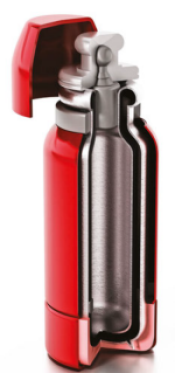
By Alex Madonik
Do you prefer warm or cool weather? Or are you more like Goldilocks, and like your weather ‘just right’?
When it gets too hot or too cold outside, it’s time to find someplace more comfortable. Our houses are designed to keep heat in when it’s cold outside, and to keep heat out when it’s too hot. Heat is a form of energy, and it always transfers from a hotter place to a cooler place. This continuous transfer of heat is why it takes extra energy to keep a refrigerator cold, or to warm your house when it’s chilly outside. All that extra energy increases your environmental footprint.
We can save energy and stay more comfortable if we slow down heat transfer. The first step is to close windows and doors, because air carries heat with it. If it’s hot outside, and your window or wall feels warm, that means heat is still getting through. Any solid material can be a heat “conductor.” Metals are good at conducting heat, similar to how they conduct electricity.
To stop heat transfer, we need an insulator. The best insulator is a vacuum — in fact, that’s how a thermos works, by wrapping its contents inside a double wall, with the air in the middle removed. Having a vacuum is best, but air itself can also be a good insulator. We use insulating materials that trap air so it can’t move. Filling the hollow spaces in the walls of a building with a good insulation is a great way to keep the temperature inside ‘just right.’
Heat is conducted through hollow walls much faster than when the wall space is filled with insulation. The more insulation, the better. This difference in the heat transfer rate is called the “R-factor.” The higher the R-factor of a wall or window, the slower heat passes through it. A single pane of glass has an R-factor of 0.9. Feel the glass on a window when it’s cold outside, to know that an R-factor of 0.9 doesn’t do much to keep heat indoors. Heat will easily move out of a building into the cold outdoors. That doesn’t do much to keep houses comfortable. It’s better to have windows with two panes of glass, with a little space for air in between them, which improves the R-factor to 2. Triple-pane glass is even better! Most new buildings must have R30–R60 insulation in ceilings, R15–R21 in walls, and R13–R30 in floors. The amount and type of insulation you have in your home depends on where you live and what the weather is like.
Insulation can be improved by adding a layer of aluminum foil backing. This aluminum foil is bright and shiny, and can reflect heat radiation and keep it from passing through the insulation. This improves the R-factor.
Newer houses and apartment buildings are built with very good amounts of insulation. For older homes, that may not be true. One of the best things you can do for an older home is to add or upgrade the amount of insulation. Methods and materials for insulating homes are constantly improving. Perhaps one day you will discover a renewable insulation that is even more economical, safe, and efficient… and make everyone’s footprint smaller!
Alex Madonik, Ph.D. is a Chemistry Instructor at Peralta Community College in Oakland, California.


